Notch trowels for tile are one of the tools that generate the most questions.
- Why do they have different sizes?
- Which size do you want?
- What is the difference between one and another?
I’m a professional tile installer that started setting tile in 1996.
These are the trowels that I and other tile installers use. We use different-sized trowels for different purposes.
Down below, you’ll see what the trowels are used for and most will have a link to a video where I demonstrate the trowel in action.
This post contains affiliate links. The site owner may earn a commission should you click on an affiliate link and make a purchase. Read more
Tile Notch Trowels
RTC SwitchBlade Trowel Set
- Trowels included:
- 1/4 x 3/16 V-notch
- 1/4 x 1/4 square notch
- 1/4 x 3/8 square notch
- 1/4 x 1/2 inch U-notch
- 1/2 x 1/2 square notch
- Euro notch
- Plastic storage case with drain holes
- Quality stainless steel blades
- Comfortable ergonomic handle
Combo-trowel set: I’m amazed at the quality of this set. It’s sturdy, stainless steel trowels with a quality handle.
You’re nearly guaranteed to have the correct size trowel for your project. No more guessing and multiple trips to the store.
The 1/4 x 3/16 V-notch can be used in places where you would use a 1/8 x 1/8 square notch trowel.
They also make a big 3/4 x 9/16 U-notch and a flat trowel that is compatible with this kit.
1/8 x 1/8 inch square notch
- Perfect trowel size for installing thin membranes like Kerdi System
- Watch demonstration of 1/8 x 1/8 square notch trowel
This is the trowel size that you want to use for installing thin waterproof membranes like Kerdi system and others.
Ditra Trowel
- 11/64 x 11/64 square notch trowel
- Perfect for installing uncoupling membranes like Ditra
- Watch demonstration of Ditra trowel
This is the Ditra Trowel with Schluter’s branding. It is an 11/64ths square notch trowel.
The 3/16 x 5/16 V-notch trowel gauges a similar amount of mortar. Either trowel works great with 1/8 inch thick uncoupling membranes like Ditra.
Also works great for small, thin mosaic tiles.
1/4 x 1/4 square notch trowel
- Great for thicker uncoupling membranes like Ditra Heat and Ditra XL.
- Perfect for installing small 2×2 tiles
- Watch demonstration of 1/4 x 1/4 x 1/4 square notch trowel
This is, perhaps, the most common notch trowel size in the world. Great for heated uncoupling membranes and subway tiles.
1/4 x 3/8 square notch trowel
- Good trowel size for bigger subway tiles and 12×12’s
- Watch demonstration of 1/4 x 3/8 square notch trowel
This is usually the trowel that you want to select instead of the 1/4 x1/4 trowel. It’s great for bigger subway tiles and 12×12 tiles.
Can also be used with 6×6 ceramic tiles and 3×6 subway tiles.
1/4 x 1/2 U-notch trowel
- Perfect trowel size for 12×24 tiles
- Watch demonstration of 1/2 square notch trowel
The 1/4 x 1/2 trowel is a better choice for large format tiles than the 1/2 x 1/2 square notch trowel.
This size trowel is perfect for 12×24 (30x60cm) tiles and other large format tiles. Remember to back butter tiles this size.
Note: See why the 1/2×1/2 inch square notch trowel is no longer recommended.
Specialty tile trowels
Flat (Finishing) Trowel
- Great for mud work, taping seams, and floor flattening
A lot of people will just choose to use the back side of their notch trowel but these trowels do have their place. They are much more unlikely to grab mesh tape and pull it out of the seam.
Euro Notch Trowel
- Alleged to be a better designed trowel
- Watch demonstration of Euro notch trowel
The Euro notch trowel is sometimes called a YW or Tiger trowel. It is alleged to be a better design by collapsing the mortar ridges in a more efficient way.
Margin Trowel
- A must-have tool
- Watch demonstration of margin trowel
A staple of a tool amongst tile setters. Used for prying up tiles, scraping mortar around edges, and a variety of other tasks.
It’s a ‘Swiss-army’ tool in the tile trade and used on every project.
Related Products
Notch Trowel Cleaning Brush
- Cleans both sides of trowel at once
- Integrated plastic scraper
The stiff bristles clean both sides of the trowel at the same time. Use the plastic scraper on the end for stubborn spots. Save your fingers from being cut. If you’ve cleaned trowels, you know what I’m talking about!
Wrapping Up
Hopefully, this post has been helpful. Be sure to check out my post on how to mix thinset mortar to maximize success with your tile project.
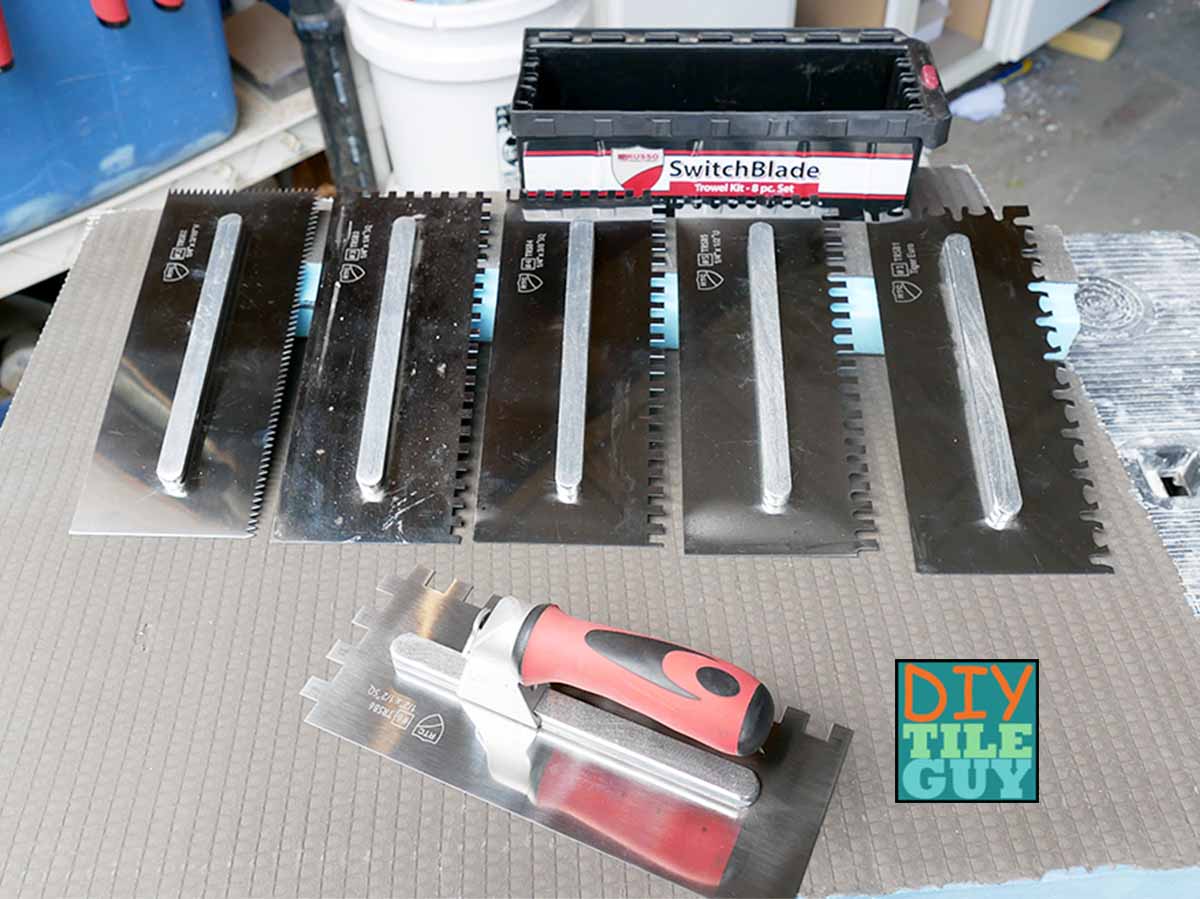
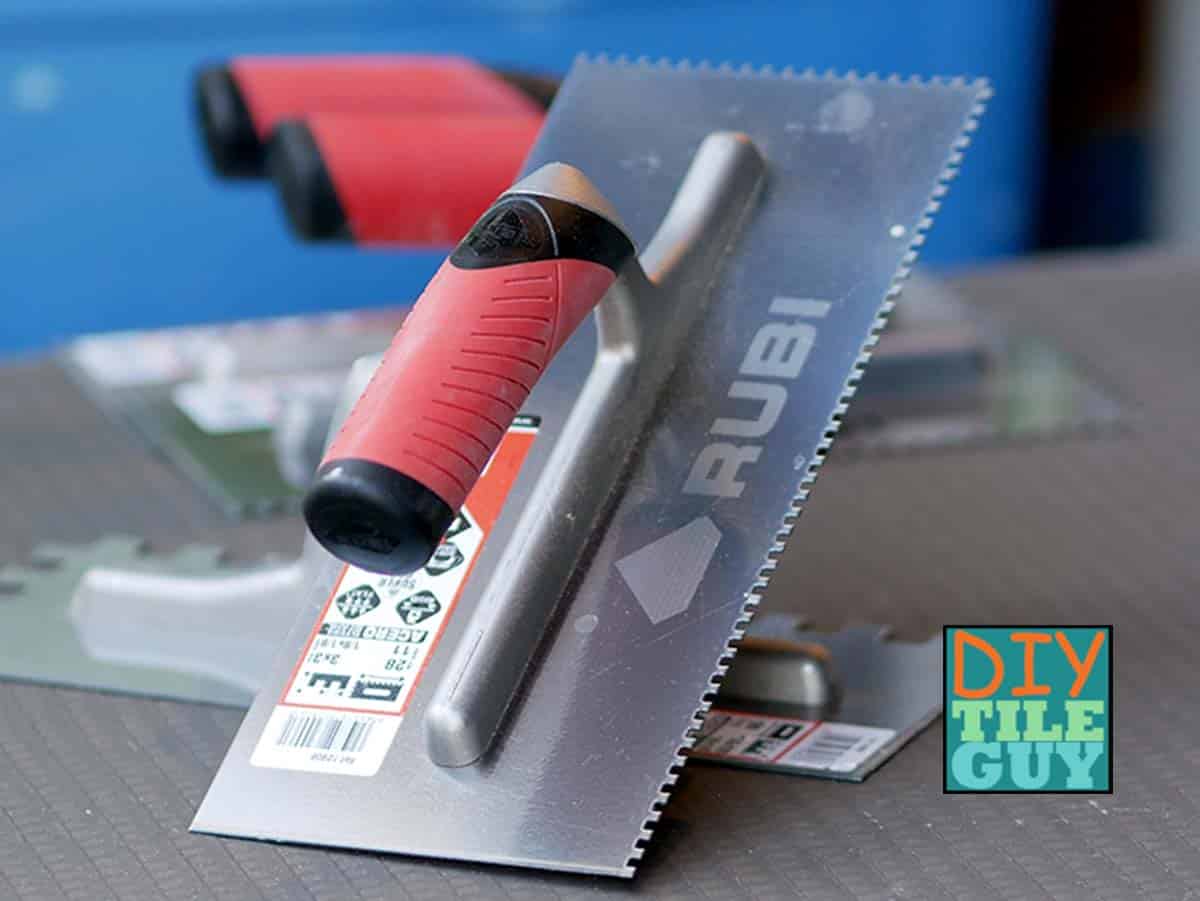
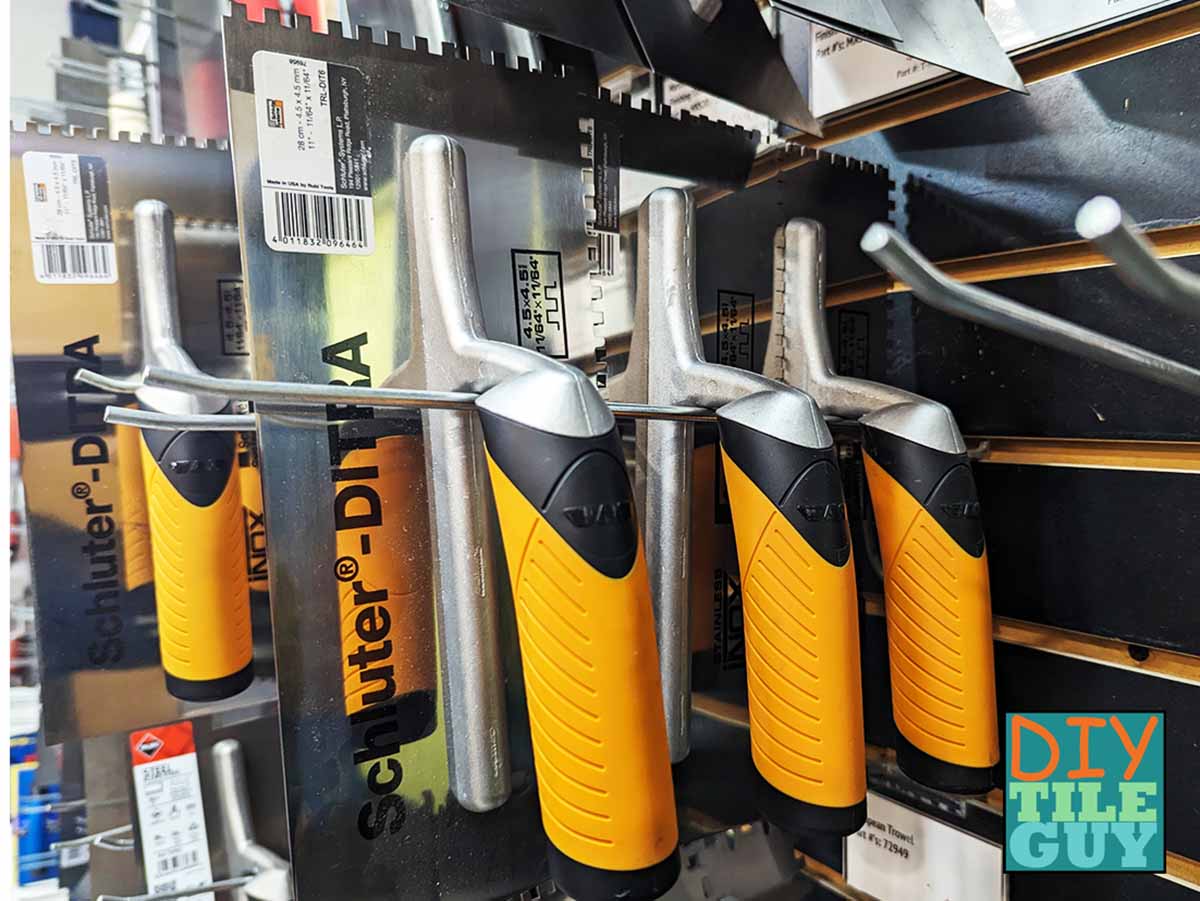
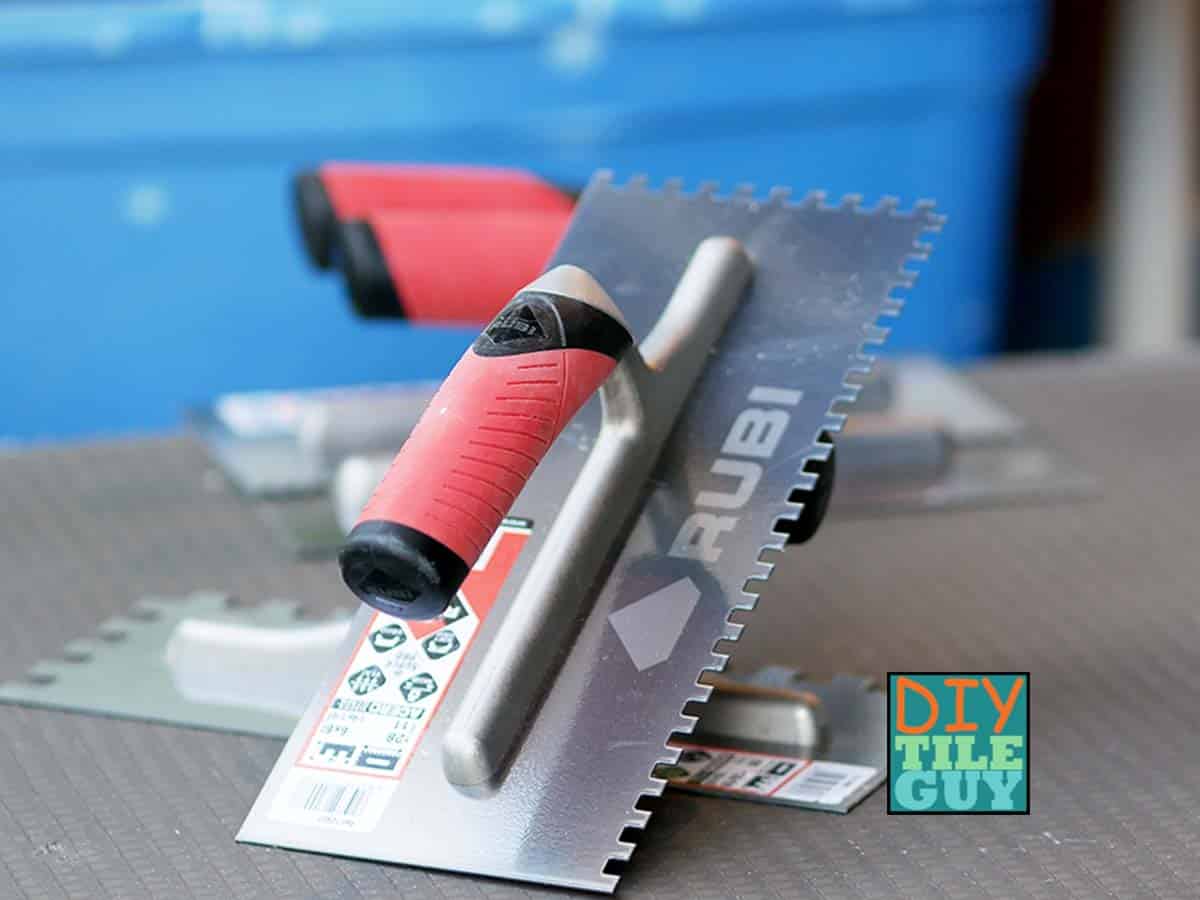
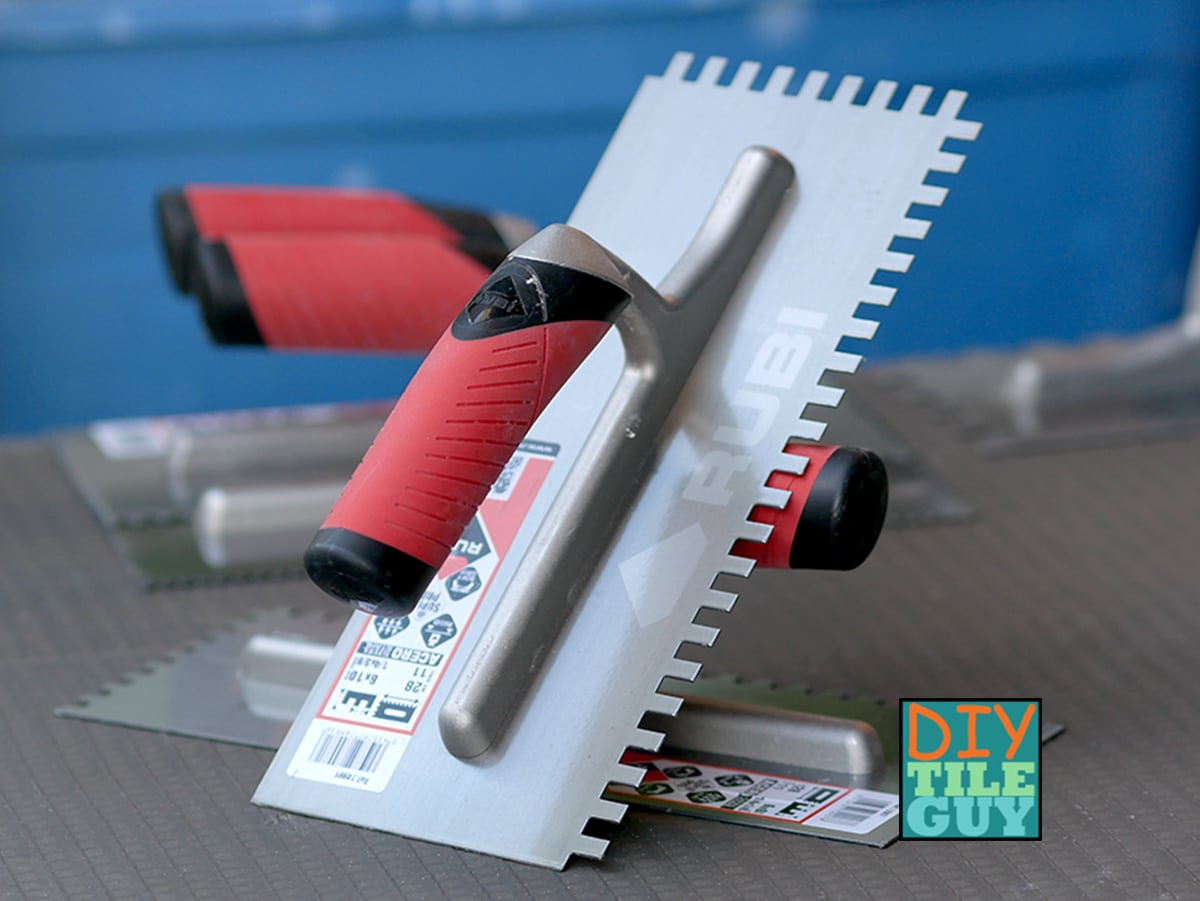
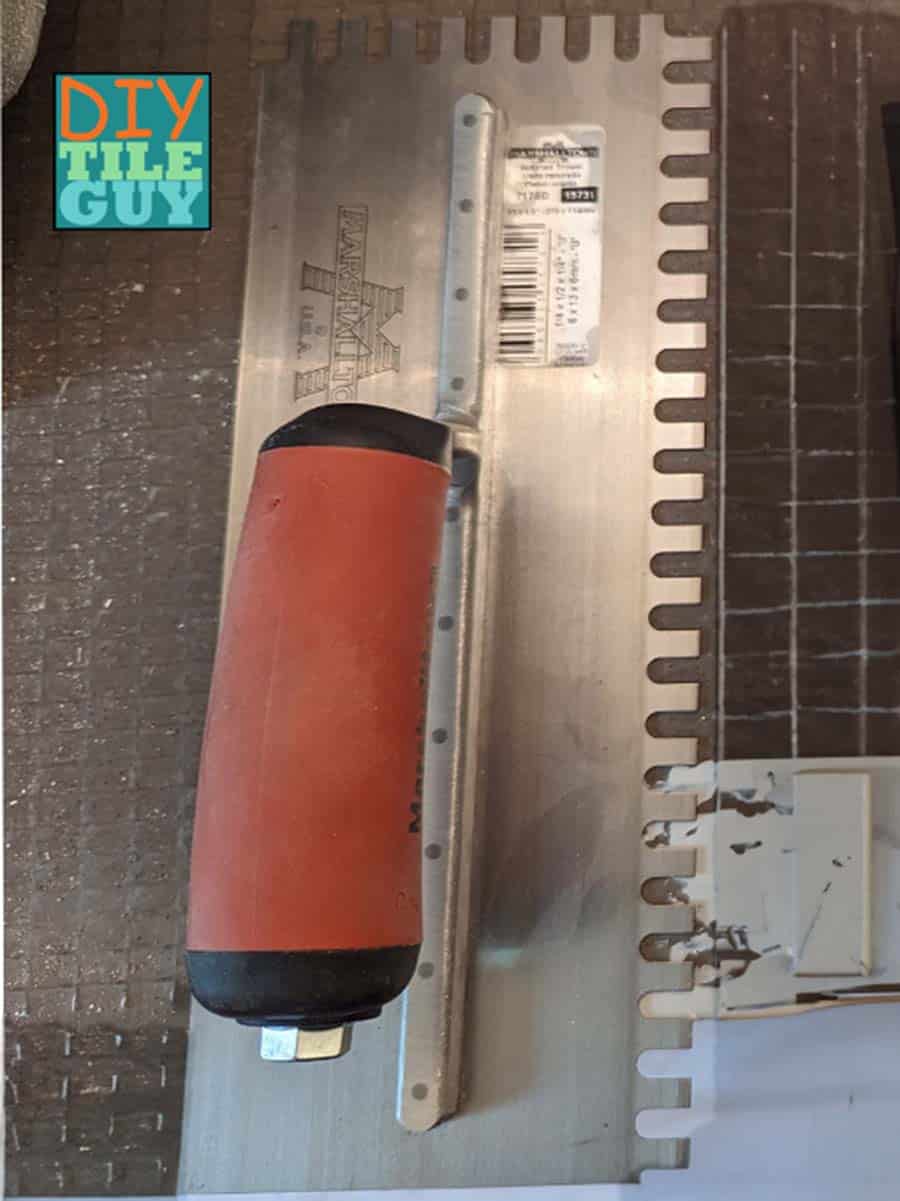
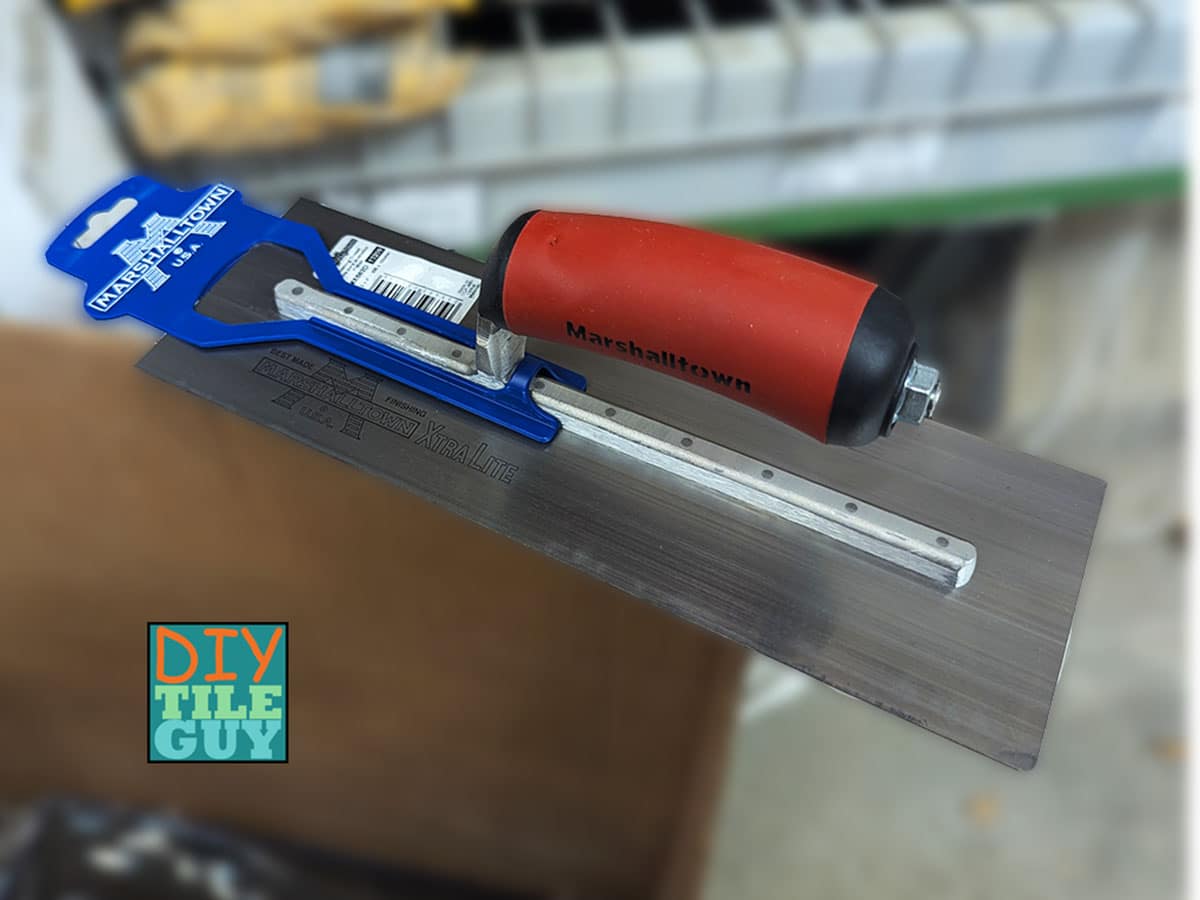
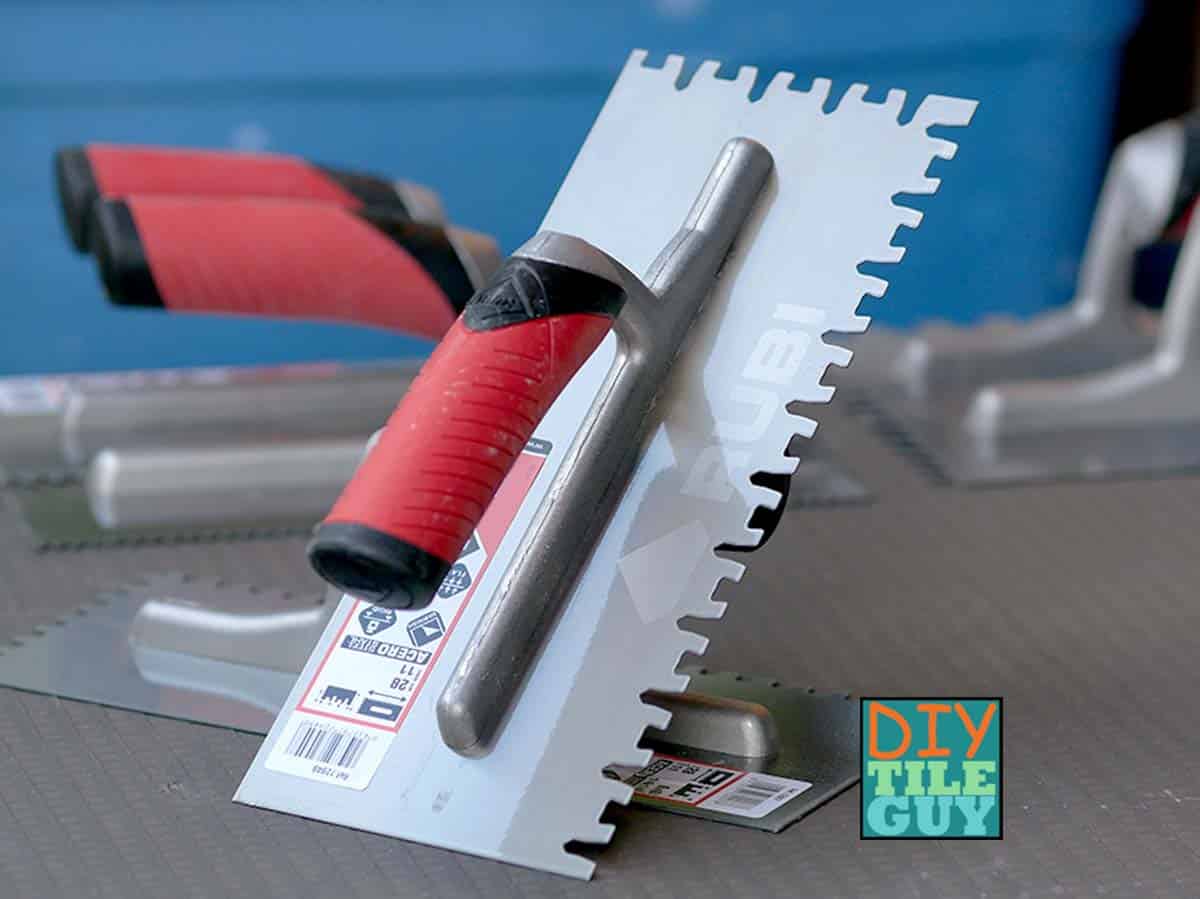
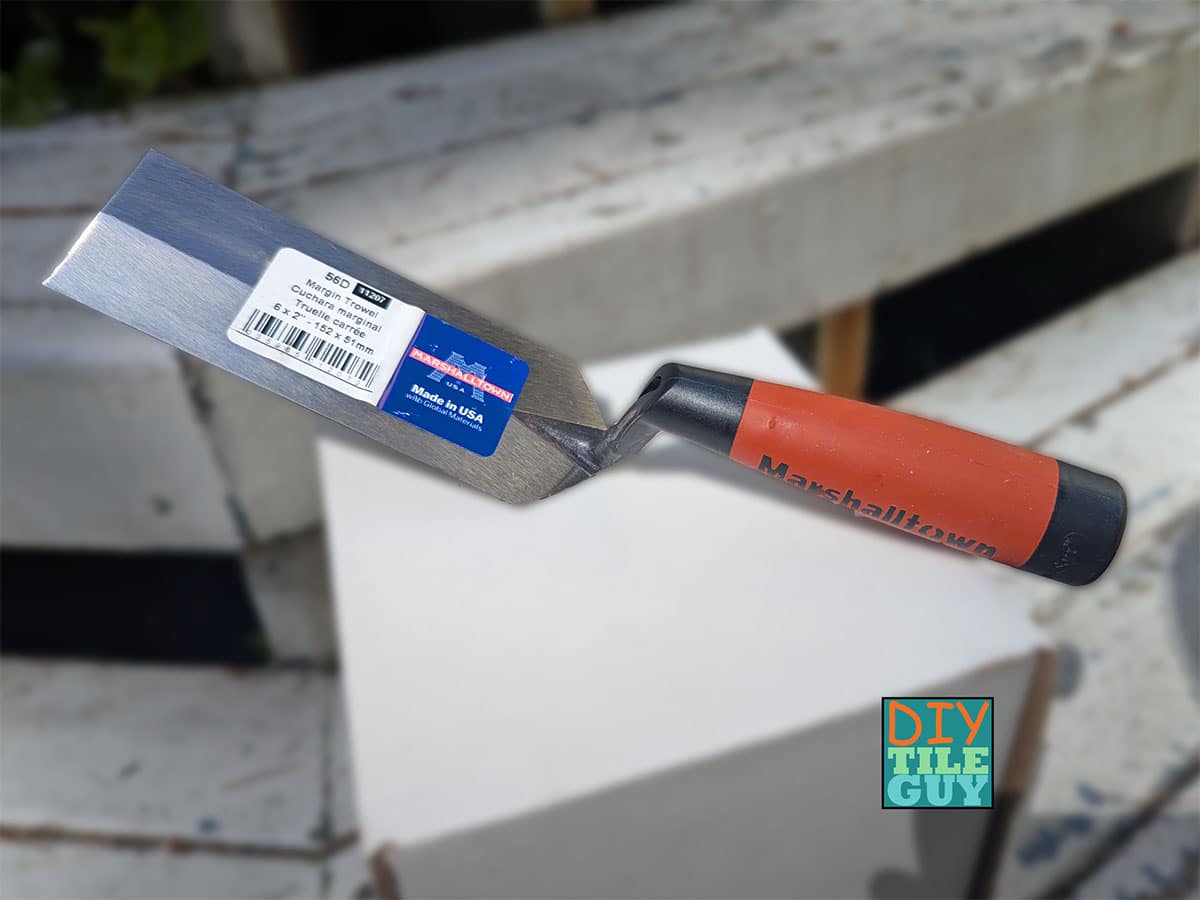
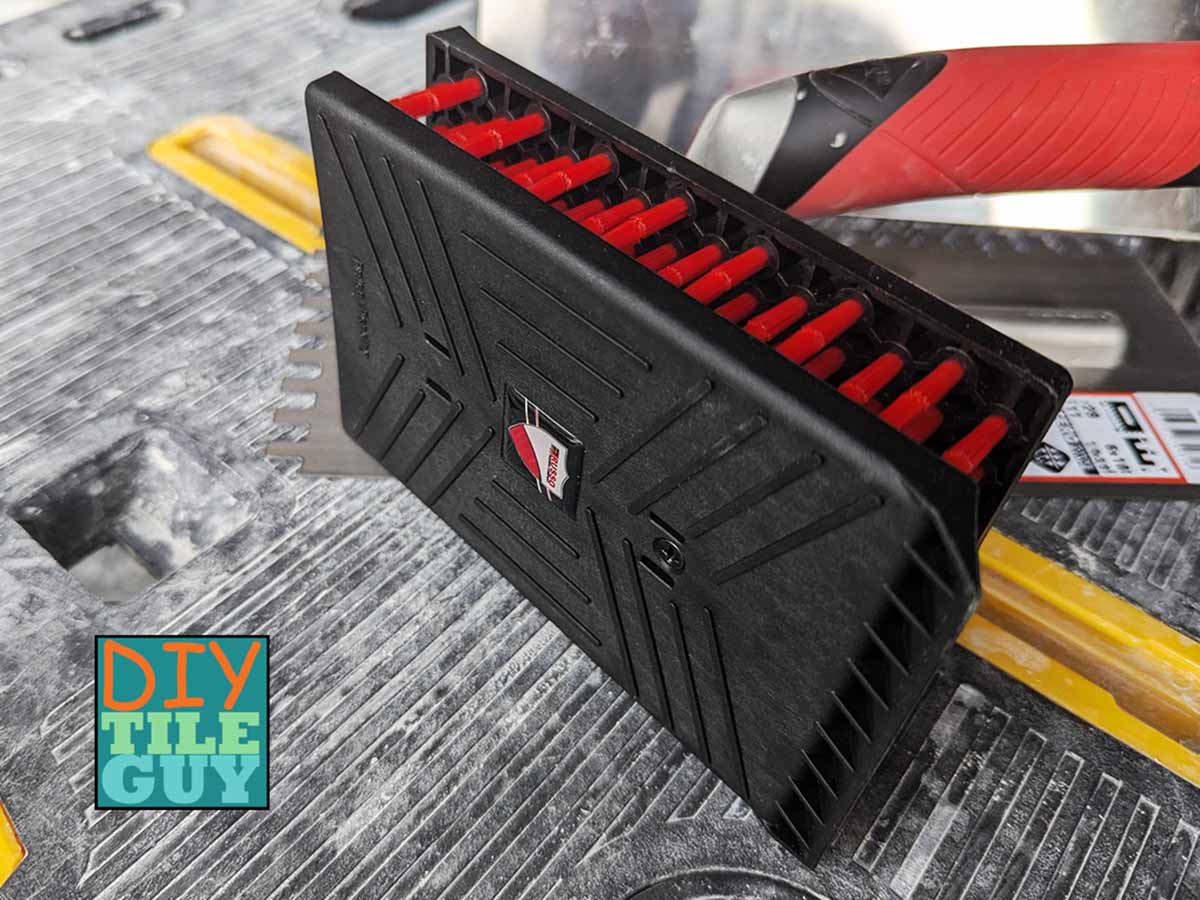
Leave a Reply